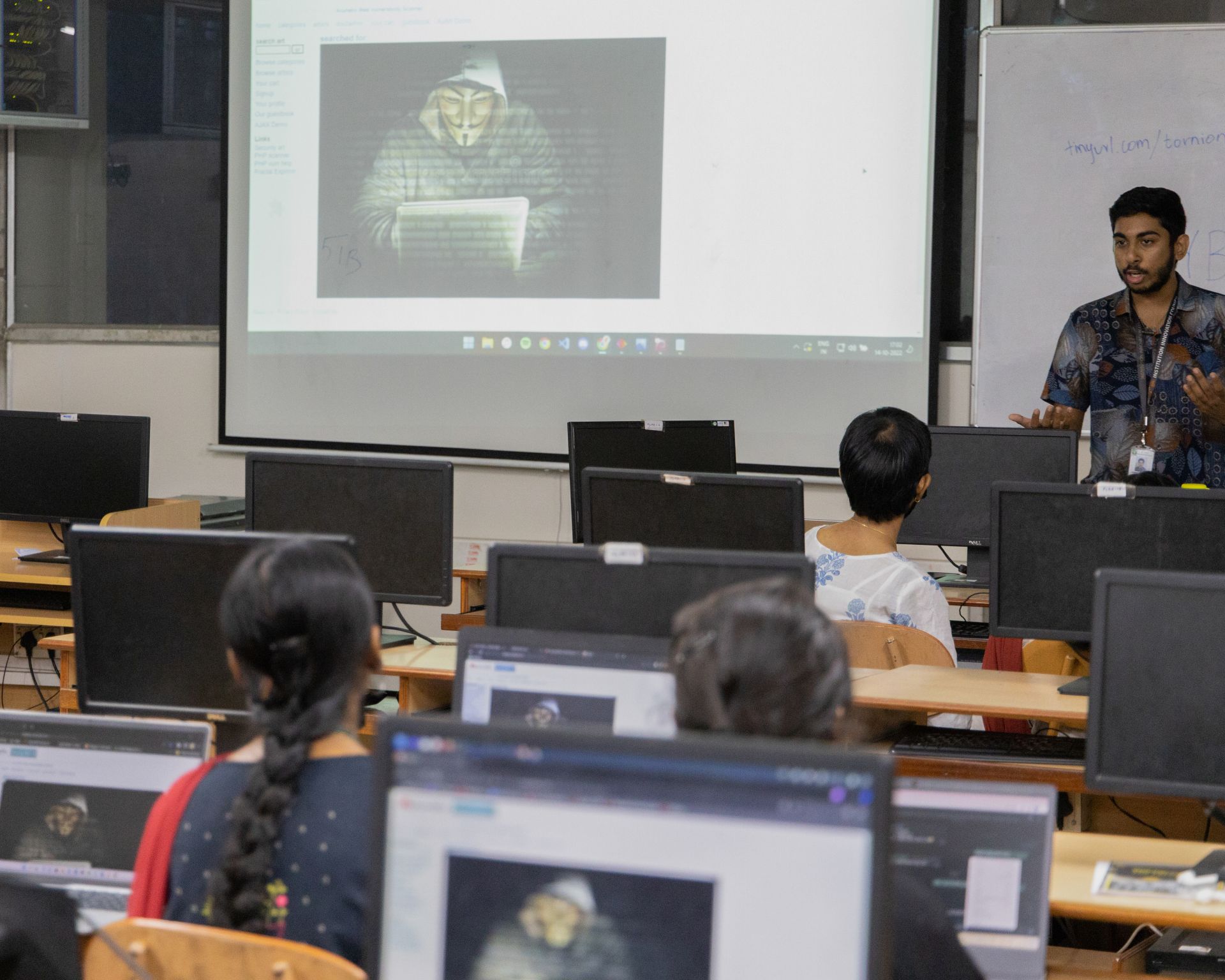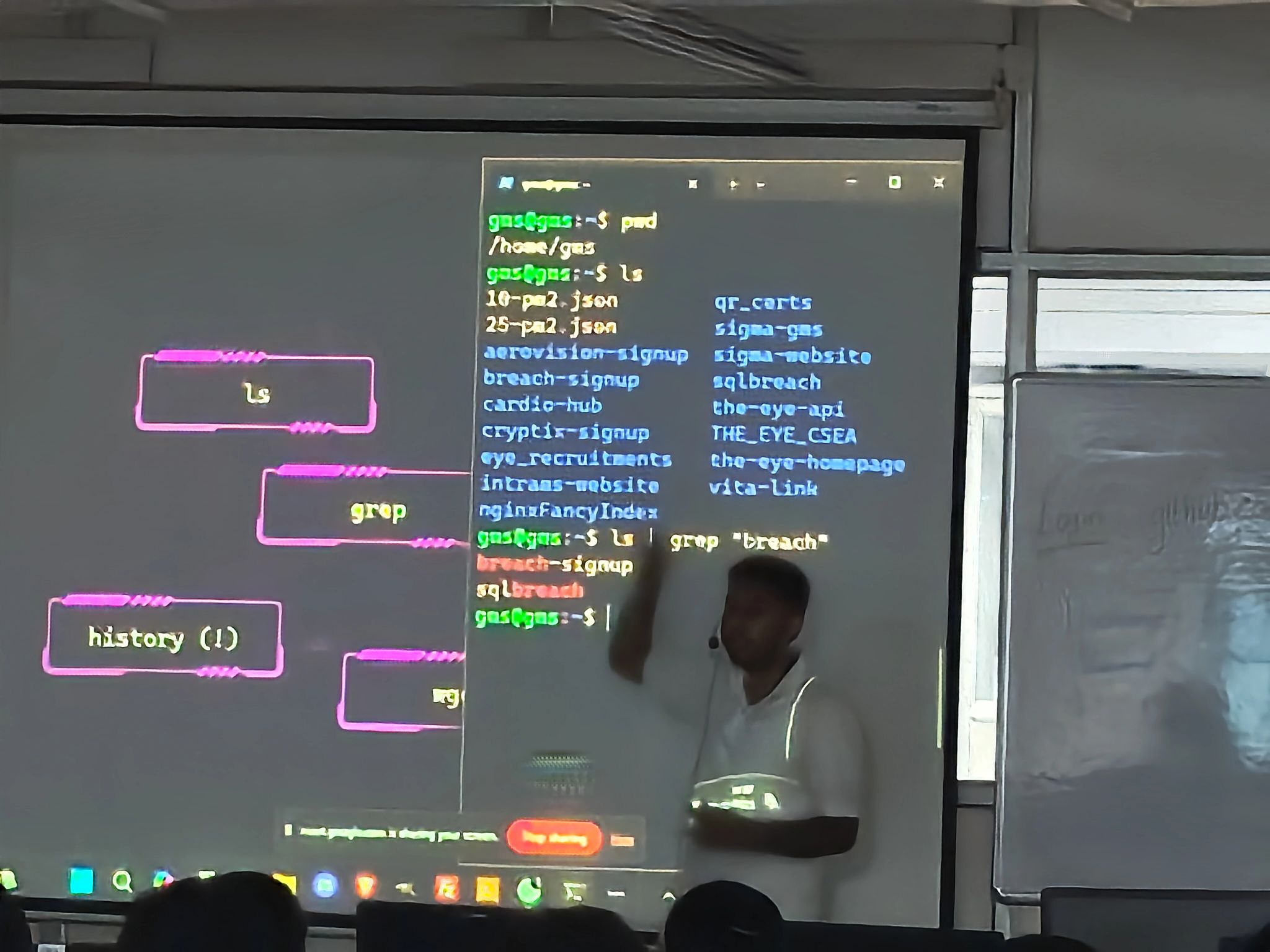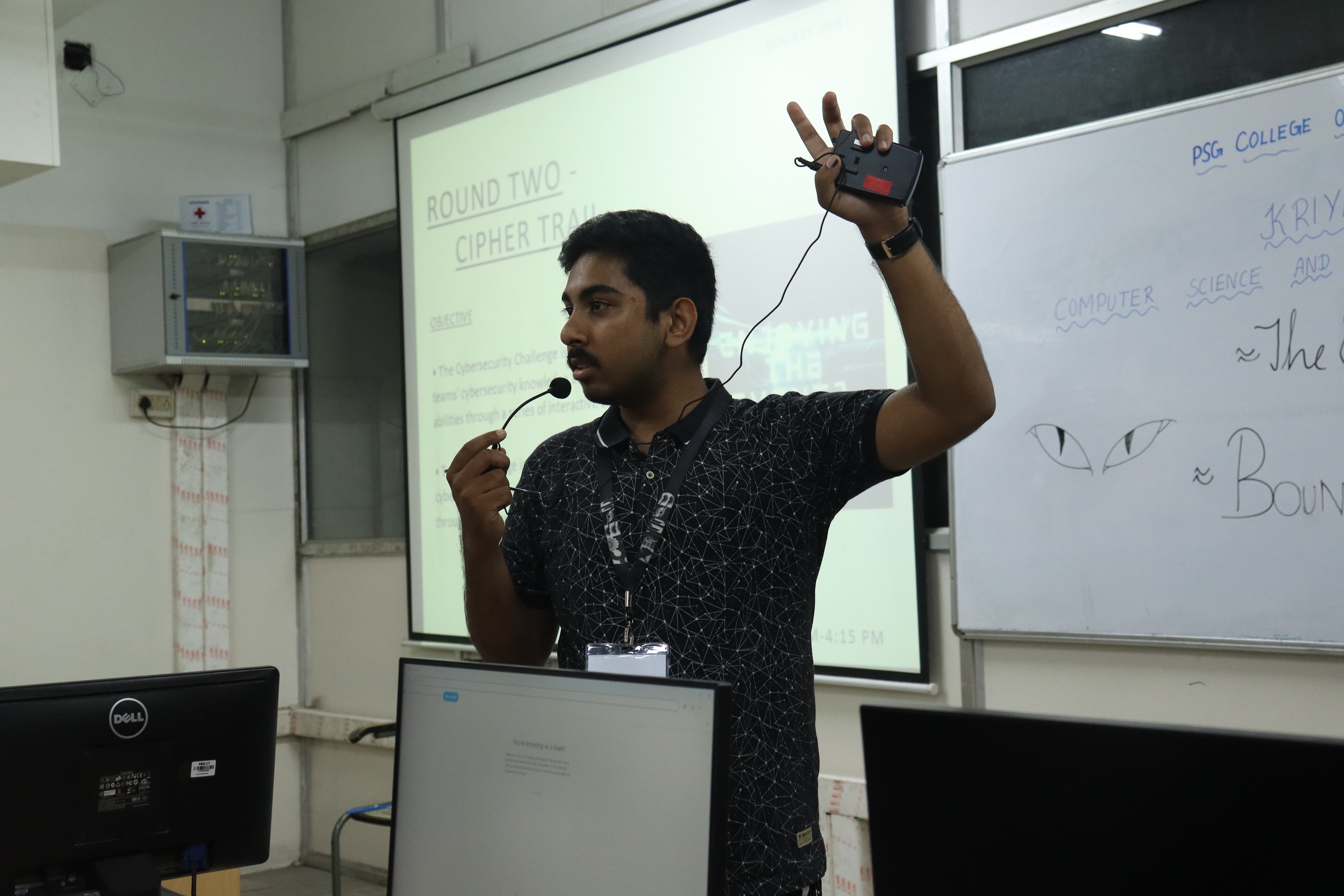Aaditya Rengarajan is pursuing a BE in Computer Science and Engineering from PSG College of Technology, India, with aspirations to pursue a PhD in Cybersecurity. His research bridges the domains of Cybersecurity and Artificial Intelligence, with a focus on offensive cybersecurity, advanced threat detection systems, electric vehicle charging station security, insider threat detection, and organizational user cyber-hygiene. Aaditya's work emphasizes leveraging machine learning to enhance threat intelligence, automate incident response, and strengthen privacy-preserving systems.
Aaditya is actively engaged in multiple research projects at the intersection of AI and Cybersecurity. His flagship project, FLARE, integrates machine learning and rule-based systems to automate the entire lifecycle of cybersecurity incidents—prevention, detection, response, and recovery. His collaborations extend to global clients, including EQUATE Petrochemical Company and VATSIM, alongside contributions to nationally funded projects like those under IIC (MHRD).
Passionate about education, Aaditya is the founder of The Eye, where he has trained over 500 students through workshops, courses, and hackathons. His sessions, focusing on cybersecurity and Python programming, aim to build practical expertise and inspire the next generation of professionals in the field.
My work experience includes:
- Intel Corporation: Currently pursuing internship in machine learning, specifically working on automating tasks for operations research purposes for Intel Foundry proceses. Particularly worked on a research project involving deep reinforcement learning, and a research project involving the architecture and implementation of an Agentic AI framework to be designed.
- Indian Space Research Organization: Pursued internship in the field of Information Security, working on modeling a new framework for Cyber-Threat intelligence based on MITRE's STIX and TAXII protocols, as well as using Graph Visualization techniques for IOC-Based threat detection.
- Tactical Cyberange Simulations Pvt. Ltd.: Worked on research and development of a framework to provide grey-hat and white-hat hackers a swiss-army knife of all tools in one place. This experience helped work on my knowledge of system design principles, and construct a viable and practicable system architecture for the same.
- EQUATE Petrochemical Company: Work included designing a sophisticated tool to trace phishing emails back to their sources by analyzing hops and IPs, along with an in-depth email analysis dashboard. Also developed a comprehensive software solution to automate reconnaissance processes, providing visibility into organizational assets and suggesting potential attack vectors. This tool offered DNS and subdomain enumeration, public exposure analysis of IT and OT devices, and identification of employee email breaches, all based on minimal input data.
- Information Sharing and Analysis Center: Research and worked on Dark Web monitoring. As a result of the learnings from this work experience, I had presented a paper in the International Conference on High Performance and Intelligent Computing (ICHPIC 2022) on Leveraging Detection Of Data Breaches By Applying Snowball Sampling.
Research Papers
FLARE: Federated Learning And Resilient Encryption for Firewalls
Abstract: Traditional firewalls rely on static rule-based mechanisms, where rules are manually defined and often written in specialized languages. While effective to a degree, these rules are inherently limited and can be easily bypassed by new and evolving types of malware, leading to significant security vulnerabilities. To address these challenges, we propose FLARE: Federated Learning And Resilient Encryption, a novel machine learning-based firewall solution. FLARE dynamically analyzes past network connections to predict and determine the appropriate actions for incoming traffic, thereby adapting to emerging threats in real-time.
Given the sensitive nature of firewall data, which often contains confidential information, the training of machine learning models poses significant privacy risks. FLARE mitigates these risks by incorporating federated learning, allowing the model to learn from decentralized data sources without requiring raw data to be shared. To further enhance privacy, we introduce an encryption layer that ensures the model learns from encrypted data, preventing exposure of sensitive information. This combined approach not only improves the resilience of firewalls but also safeguards the confidentiality of the data used in training, offering a robust solution for modern cybersecurity challenges.
Aaditya Rengarajan, Lohith Senthilkumar, "FLARE: Federated Learning And Resilient Encryption for Firewalls", presented, IEEE 7th Pune Council International Conference (PUNECON), Pune, India, 2024
Request this paper
View Presentation Certificate
SHADOW: A framework for Systematic Heuristic Analysis and Detection of Observations on the Web
Abstract: The cyberspace contains vast amounts of information that are crucial for cybersecurity professionals to gather threat intelligence, prevent cyberattacks, and secure organizational networks. Unlike earlier and less targeted attacks, modern cyber-attacks are more organized and sophisticated, often targeting specific groups, which leaves many users unaware of the vulnerable resources within the cyberspace. The increasing freedom on information access in the deep and dark web has led many organizations to identify their data loose on these spaces.
Therefore, creating methods to crawl and extract valuable information from the deep web is a critical concern. Some deep web content can be accessed through the surface web by submitting query forms to retrieve the needed information, but it is not as simple in all cases. This paper proposes a system of framework to identify these leaks and notify relevant parties on the same in-time.
Aaditya Rengarajan, Lohith Senthilkumar, Neelesh Padmanabh, Akhil Ramalingam, "SHADOW: A framework for Systematic Heuristic Analysis and Detection of Observations on the Web", accepted, International Conference on Artificial Intelligence, Metaverse, and Cybersecurity, Dubai, 2024
Request this paper
View Acceptance Certificate
View on IEEEXplore
View Presentation Certificate
Enhancing ADS-B using SAABE: Secure Authentication and Avionic Broadcast Encryption
Abstract: Automatic Dependent Surveillance-Broadcast (ADSB) systems are integral to modern aviation but face significant security challenges due to the inherent broadcast nature of the system. Unlike earlier and less targeted attacks, modern cyberattacks are more organized and sophisticated, often targeting specific groups, which leaves many users unaware of the vulnerable resources within the aero-cyberspace. The freedom on information access in the skies has led many malicious actors to expose, leak, spoof and anonymously attack this space. Therefore, creating methods to ensure confidentiality, integrity and availability for communication systems in the aerospace is a critical concern. ADS-B transmissions can be accessed through the simple web exploration by submitting query forms to retrieve the needed information, but it is not as simple in all cases. ADSB Transmissions can also be spoofed to jam the radar view of Air Traffic Controllers.
Aaditya Rengarajan, Akshay Perison Davis, Navaneetha Krishnan KS, R Vishal, Subhasri Shreya S L, Dr. Jayashree Subramanian "Enhancing ADS-B using SAABE: Secure Authentication and Avionic Broadcast Encryption", accepted, IEEE International Conference on Vision, Image and Signal Processing (ICVISP), Kuming, China, 2024
Request this paper
Enhancing the Resilience of Privacy-Preserving Machine Learning using Adversarial Techniques
Abstract: This paper introduces a novel scheme that integrates adversarial techniques with differential privacy and homomorphic encryption techniques to enhance the resilience of privacy-preserving machine learning systems. By incorporating adversarial objectives into the optimization procedure, we learn models that are inherently more resistant to privacy attacks while maintaining high utility. Our scheme leverages the strengths of adversarial training, differential privacy, and secure differential privacy to mitigate their respective weaknesses. Through extensive experiments on various datasets and learning tasks, we demonstrate the effectiveness of our adversarial approach in achieving strong privacy guarantees while maintaining competitive performance compared to non-private models.
Aaditya Rengarajan, Lohith S, Amitha Lakshmi Raj, Arun U S, "Enhancing the Resilience of Privacy-Preserving Machine Learning using Adversarial Techniques", presented, IEEE International Conference on Distributed Systems, Computer Networks and Cybersecurity, Bangalore, India, 2024
Request this paper
View Presentation Certificate
Enhancing Cybersecurity Resilience with CYBRANA: A Cyber YARA/YAML-Based Resilience Firewall Solution Applied with Next-Gen AI
Abstract: In Today’s digital landscape, huge number of server requests occur daily making the threat of cyberattacks is ever-present. CYBRANA employs an AI model based on Random forest Classification to meticulously scrutinize the firewall/server logs to identify a list of potential cyber attack requests. The request path of each log in the suspected list is analyzed with the help of an extensive set of YAML rules, to identify potentially known attacks . Upon attack detection, it is mapped with the MITRE CAPECTM architecture to classify the attack type, it’s severity (using CVSS scoring) and suitable mitigations. Our robust system provides for detection and mitigation of cyber attacks by plugging the gap between existing public cybersecurity frameworks and server logs, hence making digital infrastructure more secure.
Aaditya Rengarajan, Dr. Karpagam G R, "Enhancing Cybersecurity Resilience with CYBRANA: A Cyber YARA/YAML-Based Resilience Firewall Solution Applied with Next-Gen AI", accepted, 3rd IEEE International Conference on Computer Vision and Machine Intelligence, Prayagraj, India, 2024
Request this paper
View on IEEEXplore
View Presentation Certificate
Leveraging Detection of Data Breaches by using Snowball Sampling
Abstract: With the data being circulated and stored on the internet increasing, the
number of data breaches occurring globally has seen a drastic rise and it is happening in
an organized manner. This possess a serious threat to both individual and organizations.
Though the organizations have a security team to monitor the breaches, the individuals
are unaware that their data being breached is a serious issue. This paper addresses the
above issue through detection using snowball sampling and preserving privacy using
Blockchain technology. Efforts have been taken to validate this system through threat
modelling by employing misuse case diagrams and attack trees.
Dr. Karpagam G R, Aaditya Rengarajan, Mithilesh E N, Santhoshi R, Subhasri Shreya S L, "Leveraging Detection of Data Breaches by using Snowball Sampling" International Conference on High Performance and Intelligent Computing, Tamil Nadu, India, 2022
Request this paper
View Abstract on Conference Souvenir
LOCKNET: Logs on Crypto Key Network
Abstract: Ensuring Transparency focuses on the topic of Network-Based Intrusion Detection Systems(NIDS). NIDS inspects traffic and detects any malicious network activity. It analyses user accounts, firewall logs, file integrity, database server logs, etc. The concept of blockchain can be used to improve an NIDS. To put it into simple words, blockchain revolves around linked lists. Each node or block of a linked list will store certain information. Blockchain also utilizes the concept of hashing for improved security. A specific encryption algorithm must be used to ensure that the blockchain system works well. The choice of which encryption algorithm will be used extensively depends on several factors. Three algorithms were analyzed. These include symmetric searchable encryption, asymmetric searchable encryption, and Triple DES algorithms. Three experiments were conducted to determine the best encryption algorithm to use.
Request this paper
SNAT: Secure Network Auditing in Transactions Logs
Abstract: Blockchain systems are essentially based on distributed digital ledgers and are vulnerable to security and privacy risks. Thus, there is a need to employ encryption methods on these systems. Numerous factors have to be considered before determining which encryption algorithm can be employed. An analysis was conducted on three existing algorithms namely Homomorphic encryption, Identity-based encryption and Attribute-based encryption. The optimal encryption algorithm was found using a sequence of three experiments. Network-Based Intrusion Detection Systems (NIDS), inspect network traffic and detect any potentially harmful behavior. Combining Secure Network Auditing in Transactions Logs (SNAT) with NIDS will produce novel results
Request this paper







 Mr. Pavan Kumar, Scientist, ISRO
Mr. Pavan Kumar, Scientist, ISRO  Mr. Harsh Shah, Founder, ReadMeNow
Mr. Harsh Shah, Founder, ReadMeNow  Mr. Ismaiel Al Tamimi, HR, EQUATE Petrochemical Company
Mr. Ismaiel Al Tamimi, HR, EQUATE Petrochemical Company